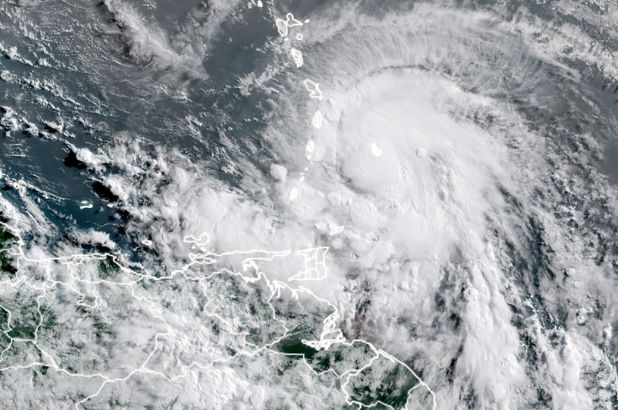Tropical Storm Elsa made landfall on the south coast of Cuba on Monday, bringing flooding rains ahead of its projected arrival in the Florida Keys early Tuesday, the National Hurricane Center said.
As of 2 p.m. Eastern time, the storm was 85 miles southeast of Havana, with sustained winds of 60 mph, according to the center. The storm, which prompted the evacuation of 180,000 people in Cuba on Sunday, was moving northwest at 14 mph and was expected to dump as much as 15 inches of rain on parts of the country, which may result in flash flooding and mudslides.
Elsa, which briefly strengthened into a hurricane last week before being downgraded over the weekend, was expected to bring tropical storm conditions to the Florida Keys and southwestern Florida starting Monday night. A tropical storm warning was in effect for most of the west coast of Florida, including Tampa Bay.
The storm was also being watched closely in South Florida, where the remainder of a collapsed condominium building was demolished Sunday night after officials worried that the unstable structure might not withstand Elsa’s powerful winds and that rescue workers could be endangered.
Officials said they hoped that the brunt of the storm would spare Surfside, the site of the deadly collapse. They cautioned residents closer to the storm’s predicted path, west of the Miami area, to prepare for heavy rain and possible power outages.
Gov. Ron DeSantis of Florida said officials were continuing to monitor the storm’s anticipated path.
“Obviously, these tracks can change,” he said.
Elsa has been blamed for the deaths of at least three people in the Caribbean.
The Caribbean Disaster Emergency Management Agency reported one death Saturday in Soufrière, St. Lucia. And in the Dominican Republic, a 15-year-old and a 75-year-old woman died in separate incidents Saturday when walls collapsed on them in heavy rain, the county’s Emergency Operations Center said in a statement.
Elsa, the fifth named storm of the 2021 Atlantic hurricane season, formed as a tropical storm Thursday. It was upgraded to a Category 1 hurricane Friday, then downgraded to a tropical storm Saturday.
Ana became the first named storm of the season, on May 23, making this year the seventh in a row that a named storm developed in the Atlantic before the official start of the season on June 1.
The links between hurricanes and climate change are becoming more apparent. A warming planet can expect to experience stronger hurricanes over time, and a higher incidence of the most powerful storms — though the overall number of storms may drop because factors like stronger wind shear might keep weaker storms from forming.
Scientists with the National Oceanic and Atmospheric Administration forecast that there would be 13-20 named storms this year, 6-10 of which would be hurricanes and 3-5 major hurricanes of Category 3 or higher in the Atlantic.
Last year, there were 30 named storms, including six major hurricanes, causing meteorologists to exhaust the alphabet for the second time and move to use Greek letters.
It was the highest number of storms on record, surpassing the 28 storms in 2005, and included the second-highest number of hurricanes on record.
This article originally appeared in The New York Times.


